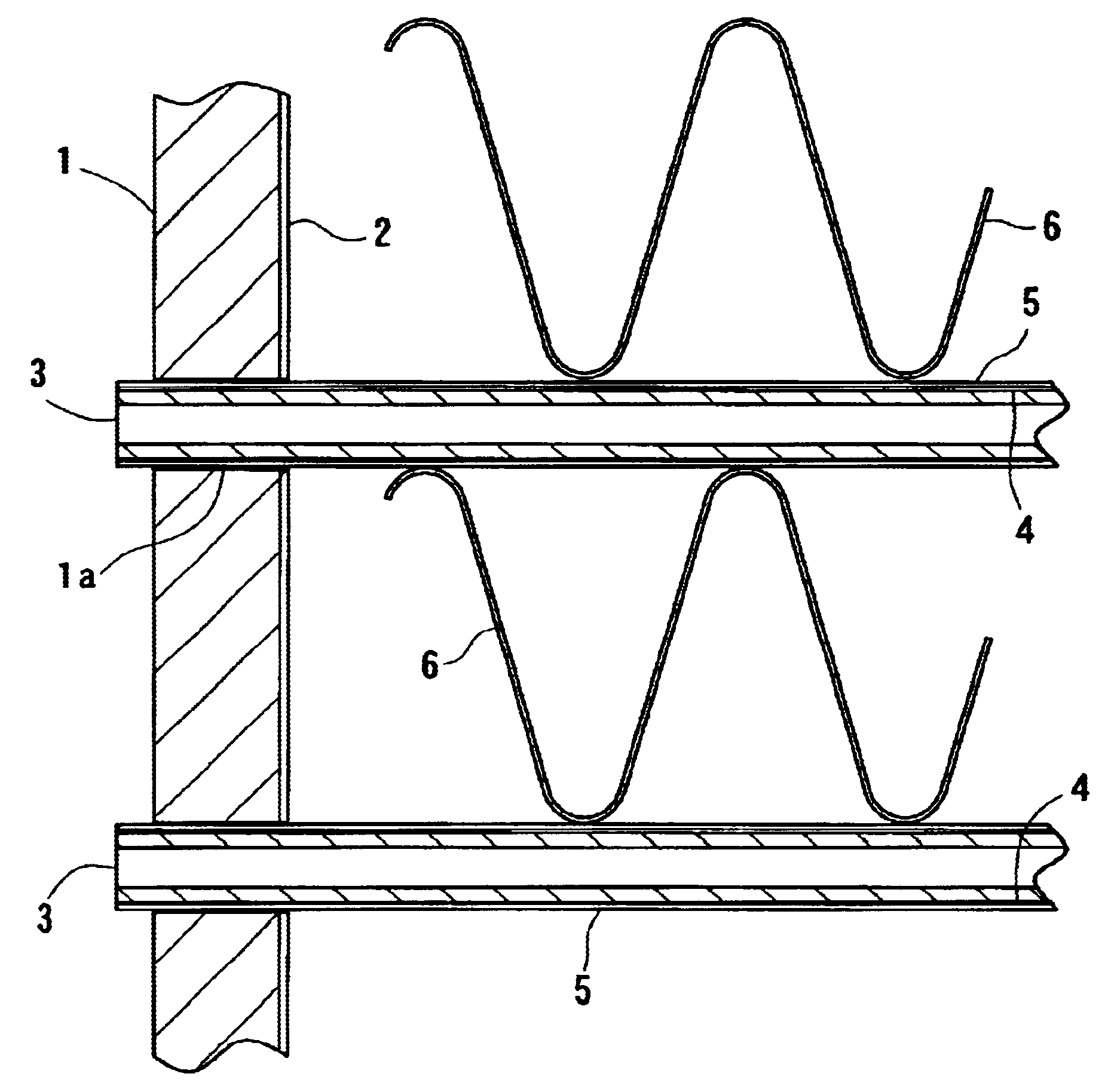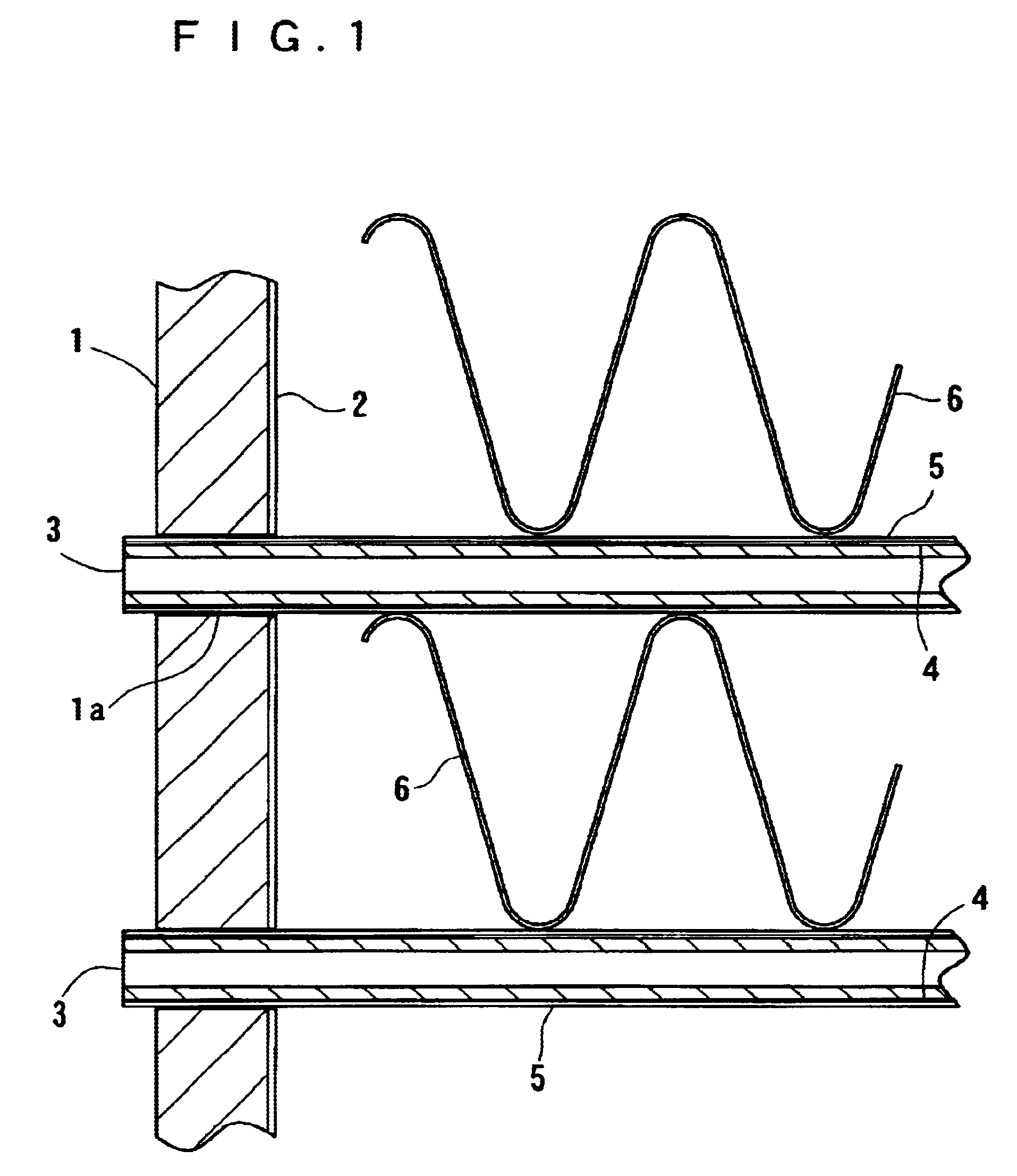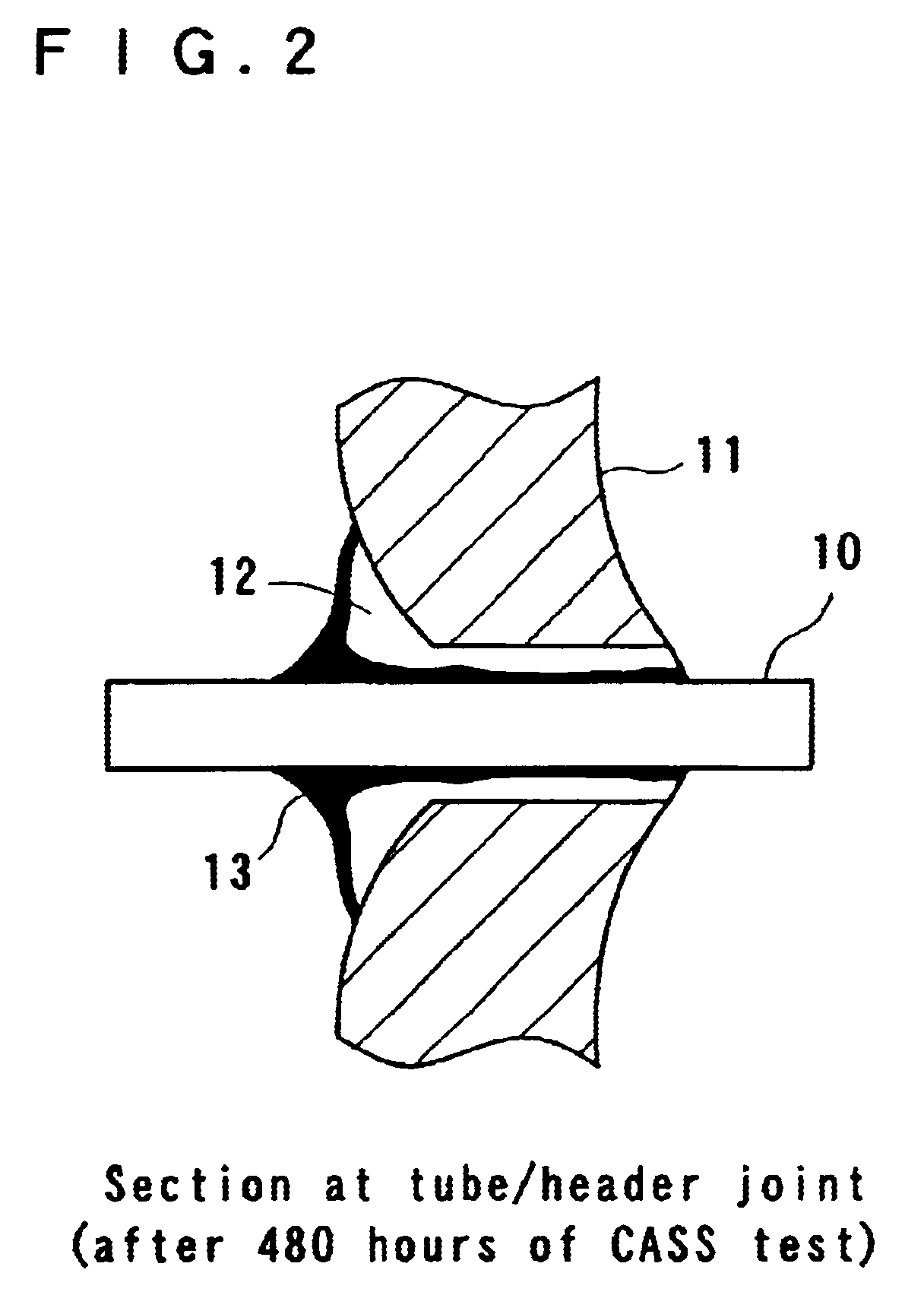Method for production of heat exchanger
a heat exchanger and production method technology, applied in the direction of manufacturing tools, soldering devices, light and heating equipment, etc., can solve the problems of inferior form method and formation of through holes, and achieve excellent corrosion resistance
- Summary
- Abstract
- Description
- Claims
- Application Information
AI Technical Summary
Benefits of technology
Problems solved by technology
Method used
Image
Examples
example 1
A ingot made of JIS A 1070 Al alloy was extruded to obtain extruded tubes, and Zn was thermally sprayed to the extruded Al alloy tubes immediately after molding, to prepare Zn-covered Al alloy tubes having a thermally Zn-sprayed layer by 10 g / m.sup.2 on the surfaces of the tubes. On the other hand, a header made of JIS A 3003 Al alloy with openings for allowing insertion of the tubes was prepared by means of extrusion molding, and furthermore corrugated fins made of JIS A 3003 Al alloy were prepared.
Moreover, one part by weight of a flux and one part by weight of a binder were mixed with 10 parts by weight of Al-12% Si binary alloy powder with an average particle size of 20 .mu.m obtained by atomizing a molten Al alloy, to prepare a brazing filler metal slurry. Said thermally Zn-sprayed Al alloy tubes were coated with the brazing filler metal slurry by 50 g / m.sup.2, to prepare thermally Zn-sprayed extruded tubes of this invention. As a comparative example, thermally Zn-sprayed extru...
example 2
Thermally Zn-sprayed extruded tubes and a header were coated with a brazing filler metal to produce heat exchangers as described for Example 1, except that the powdery brazing filler metal of the brazing filler metal slurry in Example 1 was sieved for classification into various divisions different in average particle size.
For the obtained heat exchangers, the brazing property at the tube / header joints was evaluated. For the brazing property, a case where the clearances at the joints could be perfectly filled with the brazing filler metal is expressed by ".smallcircle.", and a case where the clearances were filled imperfectly is expressed by ".quadrature.". The results are shown in Table 2.
As can be seen from Table 2, in the cases where the average particle size of the powdery brazing filler metal applied to the header was larger than the average particle size of the powdery brazing filler metal applied to the tubes, the most excellent brazing property could be obtained.
As described...
PUM
| Property | Measurement | Unit |
|---|---|---|
| particle size | aaaaa | aaaaa |
| particle size | aaaaa | aaaaa |
| particle size | aaaaa | aaaaa |
Abstract
Description
Claims
Application Information
 Login to View More
Login to View More - R&D
- Intellectual Property
- Life Sciences
- Materials
- Tech Scout
- Unparalleled Data Quality
- Higher Quality Content
- 60% Fewer Hallucinations
Browse by: Latest US Patents, China's latest patents, Technical Efficacy Thesaurus, Application Domain, Technology Topic, Popular Technical Reports.
© 2025 PatSnap. All rights reserved.Legal|Privacy policy|Modern Slavery Act Transparency Statement|Sitemap|About US| Contact US: help@patsnap.com



